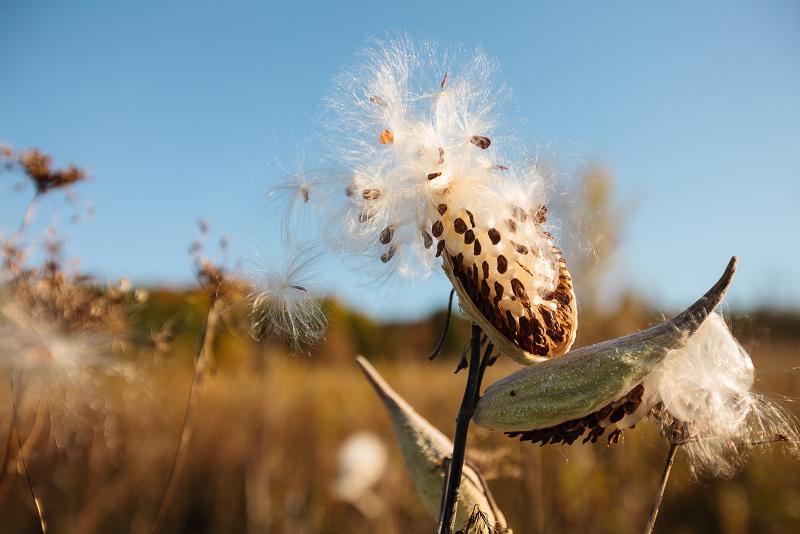Weeds can save lives. When World War II broke out, Japan cut off the supply of kapok, the filler for life vests and insulation for flight jackets.
Luckily, there is an American weed whose fibers can float objects 30 times their own weight and are six times more buoyant than cork. They are also lightweight and six times warmer than lamb's wool. These fibers come from milkweed seed pods. Millions of pounds of wild milkweed pods were picked and used in the war effort.
The white, fluffy floss was once used as stuffing for mattresses, pillows and quilts. It was often carried by hunters and trappers as tinder to start fires. Native Americans twisted the stringy fibers of the stems into twine and rope, and even wove them into a tough, coarse fabric. They cooked young, tender milkweed shoots as a vegetable, much like asparagus. (Be certain any weed is safe before eating it.) They also used the milky sap to remove warts.
The familiar, common milkweed (Asclepias syriaca) is a hardy perennial that will easily grow just about anywhere in the United States.
These are big, sprawling plants often reaching 6 feet tall. They are best planted in a spot all their own, because they can overwhelm other garden plants.
The fragrant, pinkish-purple flowers will attract lots of helpful pollinators to your garden, and provide food for monarch butterflies (Danaus plexippus). Each year, monarch butterflies migrate 3,000 miles, and they are the only butterflies that migrate in both directions. These tiny insects can fly up to 100 miles every day.
Because monarch caterpillars eat the somewhat poisonous milkweed plant, they are a toxic food that birds and other predators avoid.
Early colonists named them “monarch” because their bright-orange color honored King William III, Prince of Orange.
Milkweed plants need full sun and well-draining soil, although some species, like swamp milkweed, actually prefer to grow in wetter soil. Scatter milkweed seeds directly in the garden in the fall or early spring. Barely cover the seeds with about 1/4-inch of dirt. After planting, keep the seedbed moist but not soggy.
The seeds will germinate in a week to 10 days. Once the seedlings are a few inches high, thin them to stand about 18 to 24 inches apart. It is best to group milkweed in blocks rather than in long rows.
Since milkweed is a wildflower, the plants do not need any additional fertilizer. Also, never use insecticides or weedkillers near milkweed. Your plants might not bloom the first year they’re planted, but the leaves will still provide food for butterfly caterpillars.
When working with milkweed, avoid getting the sap in your eyes, and always wash your hands carefully after touching the plant. Some people may have an allergic skin reaction to the sap.
Plant milkweed this fall, and for years to come, your garden will be filled with deliciously fragrant flowers. Save the seedpods and floss, and you can weave a silky cloth, make a life jacket, or stuff a pillow or quilt. And wait for the butterflies.






















































